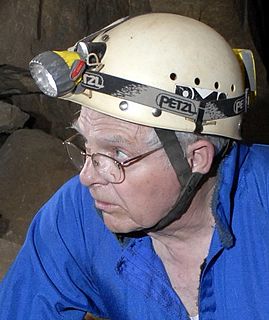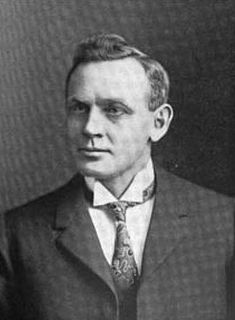Related Research Articles

Warren Gamaliel Harding was the 29th president of the United States, serving from 1921 until his death in 1923. A member of the Republican Party, he was one of the most popular U.S. presidents to that point. After his death, a number of scandals, including Teapot Dome, came to light, as did his extramarital affair with Nan Britton; those eroded his popular regard.

The 1876 United States presidential election was the 23rd quadrennial presidential election, held on Tuesday, November 7, 1876, in which Republican nominee Rutherford B. Hayes faced Democrat Samuel J. Tilden. It was one of the most contentious presidential elections in American history and its resolution involved negotiations and compromise between the Republicans and Democrats.

The 1920 United States presidential election was the 34th quadrennial presidential election, held on Tuesday, November 2, 1920. In the first election held after the end of World War I and the first election after the ratification of the Nineteenth Amendment, Republican Senator Warren G. Harding of Ohio defeated Democratic Governor James M. Cox of Ohio.

Marion is a city in and the county seat of Marion County, Ohio, United States. The municipality is located in north-central Ohio, approximately 50 miles (80 km) north of Columbus.

James Middleton Cox was the 46th and 48th Governor of Ohio, a two-term U.S. Representative from Ohio, and the Democratic nominee for President of the United States at the 1920 presidential election. His running mate during his presidential campaign was future president Franklin D. Roosevelt. He founded the chain of newspapers that continues today as Cox Enterprises, a media conglomerate.

Harry Micajah Daugherty was an American politician. A key Ohio Republican political insider, he is best remembered for his service as Attorney General of the United States under Presidents Warren G. Harding and Calvin Coolidge, as well as for his involvement in the Teapot Dome scandal during Harding's presidency.

The 1920 National Convention of the Republican Party of the United States nominated Ohio Senator Warren G. Harding for president and Massachusetts Governor Calvin Coolidge for vice president. The convention was held in Chicago, Illinois, at the Chicago Coliseum from June 8 to June 12, 1920, with 940 delegates. Under convention rules, a majority plus one, or at least 471 of the 940 delegates, was necessary for a nomination.

Edwin Denby was an American lawyer and politician who served as Secretary of the Navy in the administrations of Warren G. Harding and Calvin Coolidge from 1921 to 1924. He also played a notable role in the infamous Teapot Dome scandal which took place during the Harding presidency. He was the son of Charles Harvey Denby, grandson of Graham N. Fitch, brother of Charles Denby, Jr., and uncle of dance critic Edwin Orr Denby.

Paul Murray Kendall was an American academic and historian, who taught for over 30 years at the University of Ohio and then, after his retirement, at the University of Kansas.

Roger W. Brucker is an American cave explorer and author of books about caves. He is most closely associated with Mammoth Cave in Kentucky, the world's longest cave, which he has been exploring and writing about since 1954.

Warren G. Harding's tenure as the 29th president of the United States lasted from March 4, 1921 until his death on August 2, 1923. Harding presided over the country in the aftermath of World War I. A Republican from Ohio, Harding held office during a period in American political history from the mid-1890s to 1932 that was generally dominated by his party. He died of an apparent heart attack and was succeeded by Vice President Calvin Coolidge.

The Little Green House on K Street was a residence in Washington DC, USA, where the notoriously corrupt deals of Warren Harding’s presidency (1921–23) are believed to have been planned.

Frank Edgar "Ed" Scobey (1866–1931) was Director of the United States Mint from 1922 to 1923.

The 1920 United States elections was held on November 2. In the aftermath of World War I, the Republican Party re-established the dominant position it lost in the 1910 and 1912 elections. This was the first election after the ratification of the 19th Amendment, which granted women the constitutional right to vote.

The 1920 United States presidential election in New Mexico took place on November 2, 1920. All contemporary forty-eight States were part of the 1920 United States presidential election. Voters chose three electors to represent them in the Electoral College, which voted for President and Vice President.
James David Robenalt is a Cleveland-based lawyer for the firm Thompson Hine LLP. He is the author of four books: Linking Rings, William W. Durbin, the Magic and Mystery of America (2004), The Harding Affair: Love and Espionage During the Great War (2009), January 1973, Watergate, Roe v. Wade, Vietnam, and the Month that Changed America Forever (2015), and Ballots and Bullets: Black Power Politics and Urban Guerrilla Warfare in 1968 Cleveland (2018).

The nomination of Robert M. La Follette for president took place at a convention held in Cleveland, Ohio from July 4-5, 1924. The convention was called by the Conference for Progressive Political Action (CPPA) and included accredited delegates from national trade unions, state branches of the CPPA, and other political organizations. Members of the Socialist Party of America played a prominent role in the organization of the July convention and the subsequent La Follette presidential campaign; representatives of the Communist Workers Party of America were banned.

Grace Goulder Izant (1893–1984) was an Ohio writer and historian who wrote for the Plain Dealer Magazine and published several books on Ohio history. She was the first Ohioan ever honored by the American Association for State and Local History, which recognized her work in 1962. She won the Cleveland Arts Prize for Literature in 1965 and was inducted into the Ohio Women's Hall of Fame in 1982.

The 1920 United States presidential election in Minnesota took place on November 2, 1920 as part of the 1920 United States presidential election in which all contemporary forty-eight states participated. Voters chose 12 electors, or representatives to the Electoral College, who voted for president and vice president. This election marks the last time a candidate for president won every county in Minnesota.

The 1920 United States presidential election in South Dakota took place on November 2, 1920 as part of the 1920 United States presidential election in which all contemporary forty-eight states participated. Voters chose five electors, or representatives to the Electoral College, who voted for president and vice president.
References
- 1 2 3 4 5 6 7 8 9 10 11 12 13 14 15 16 "In Memoriam: Robert K. Murray". Organization of American Historians. 15 April 2019. Retrieved 17 May 2020.
- 1 2 3 "Robert K. Murray". American Heritage. Retrieved 17 May 2020.
- ↑ "Robert K Murray". W.W. Norton. Retrieved 17 May 2020.
- ↑ Murray, Robert K. (1955). Red Scare: A Study in National Hysteria, 1919-1920. University of Minnesota Press. Retrieved 17 May 2020.
- ↑ Murray, Robert K. (1967). The Harding Era: Warren G. Harding and His Administration. University of Minnesota Press. Retrieved 17 May 2020.
- ↑ Murray, Robert K.; Brucker, Roger W. (1973). The Politics of Normalcy: Governmental Theory and Practice in the Harding-Coolidge Era. W.W. Norton. Retrieved 17 May 2020.
- ↑ Murray, Robert K. (1976). The 103rd Ballot: Democrats and the Disaster in Madison Square Garden. Harper & Row. Retrieved 17 May 2020.
- ↑ Murray, Robert K.; Brucker, Roger W. (1982). Trapped!: The Story of Floyd Collins. University Press of Kentucky. Retrieved 17 May 2020.
- ↑ Murray, Robert K.; Blessing, Tim H. (1993). Greatness in the White House: Rating the Presidents, from Washington Through Ronald Reagan. Penn State Press. Retrieved 17 May 2020.